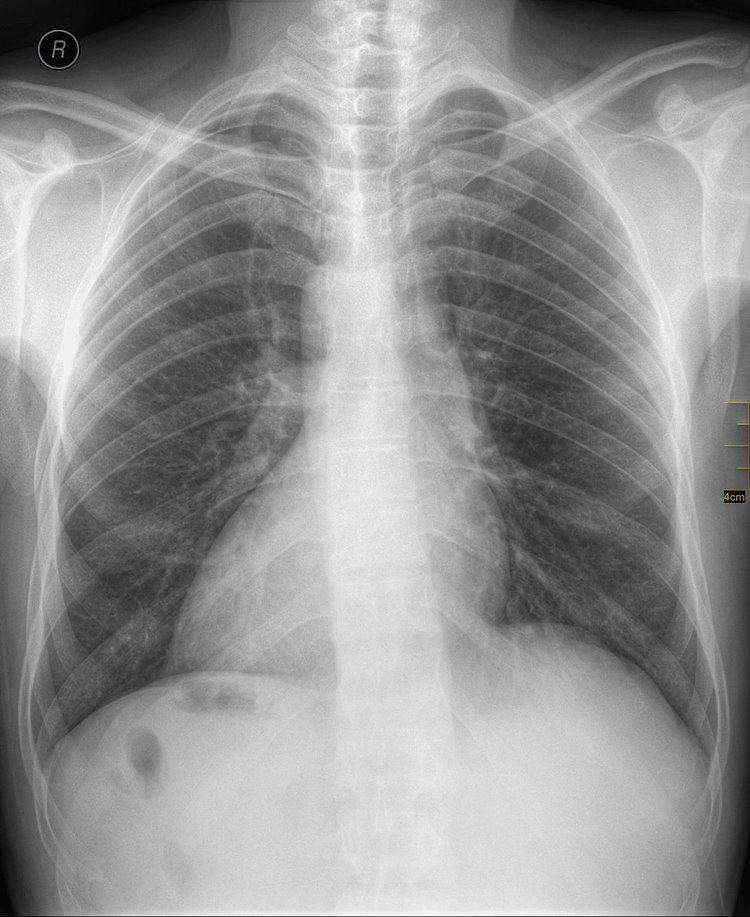Specialty medical genetics ICD-9-CM 746.87 MedlinePlus 007326 | ICD-10 Q24.0 DiseasesDB 3617 MeSH C14.240.400.280 | |
 | ||
Dextrocardia (from Latin dexter, meaning "right," and Greek kardia, meaning "heart") is a rare congenital defect in which the apex of the heart is located on the right side of the body. There are two main types of dextrocardia: dextrocardia of embryonic arrest (also known as isolated dextrocardia) and dextrocardia situs inversus. Dextrocardia situs inversus is further divided.
Contents
Dextrocardia of embryonic arrest
In this form of dextrocardia, the heart is simply placed further right in the thorax than is normal. It is commonly associated with severe defects of the heart and related abnormalities including pulmonary hypoplasia.
Dextrocardia situs inversus
Dextrocardia situs inversus refers to the heart being a mirror image situated on the right side. For all visceral organs to be mirrored, the correct term is dextrocardia situs inversus totalis.
Although statistically people with dextrocardia situs inversus do not have any medical problems from the disorder, they may be prone to a number of bowel, esophageal, bronchial and cardiovascular disorders (such as double outlet right ventricle, endocardial cushion defect and pulmonary stenosis). Certain cardiovascular and pulmonary disorders related to dextrocardia can be life-threatening if left unchecked (see reference).
Kartagener syndrome may also be present in patients with dextrocardia situs inversus but also involves mirrored positioning of major internal organs and may include male infertility.
Diagnosis
Medical diagnosis of the two forms of congenital dextrocardia can be made by ECG or imaging.
Technical dextrocardia
Technical dextrocardia refers to an ECG reading that has no basis in the patient's anatomy. This apparent presentation of dextrocardia is caused usually by the technician inadvertently swapping the limb leads on a 12 lead ECG. Usually this would show as an extreme axis deviation.
Management
ECG leads must be placed in reversed positions on a person with dextrocardia. In addition, when defibrillating someone with dextrocardia, the pads should be placed in reverse positions. That is, instead of upper right and lower left, pads should be placed upper left and lower right.
When heart transplantation is required in a person with situs inversus, reconstruction of the venous pathways to accommodate a normal donor heart is a major, but not insurmountable, challenge.
Epidemiology
Dextrocardia is believed to occur in approximately 1 in 12,000 people.
A Japanese study of 1753 fetal cardiac echocardiograms over five years only revealed two cases.
